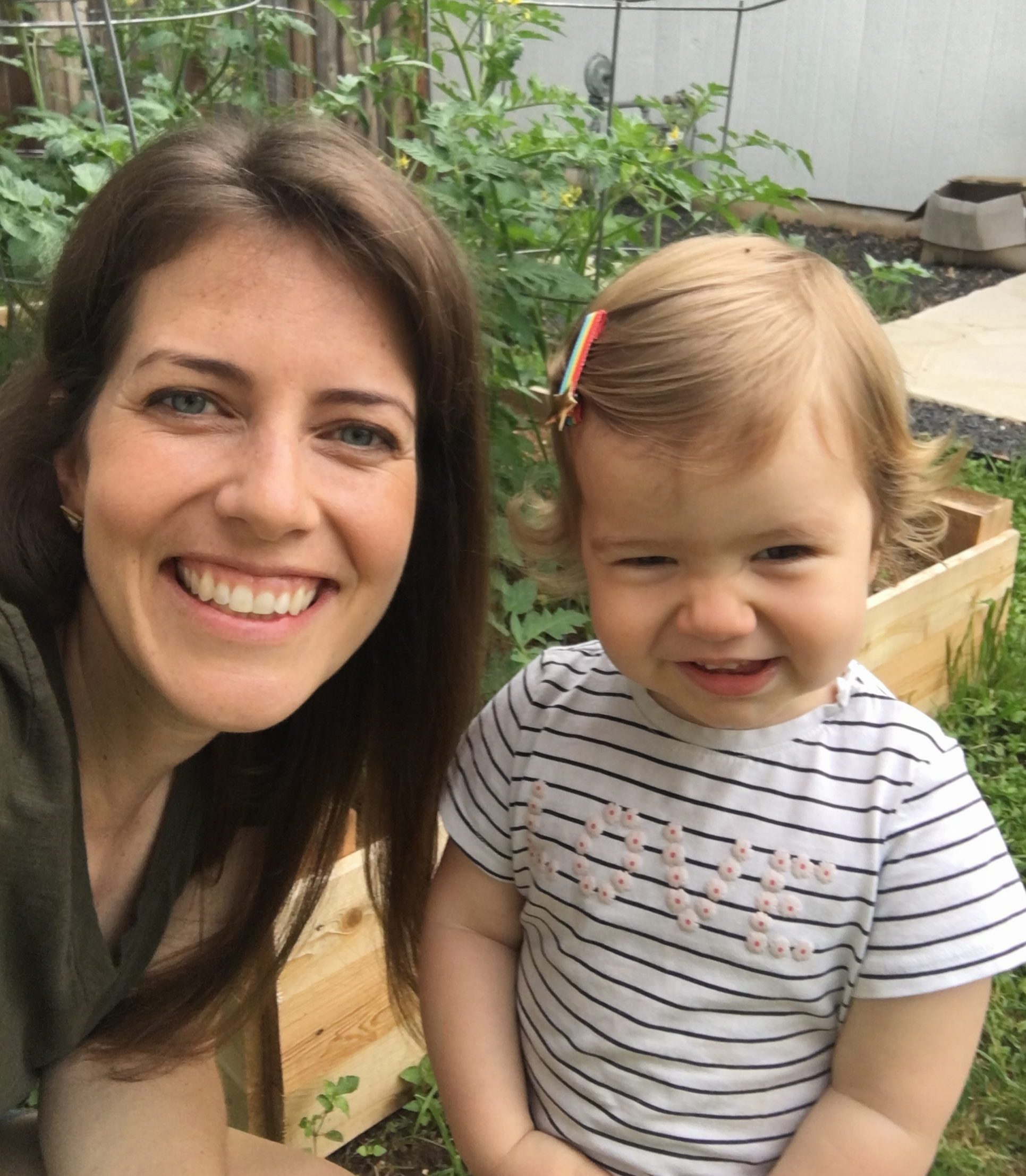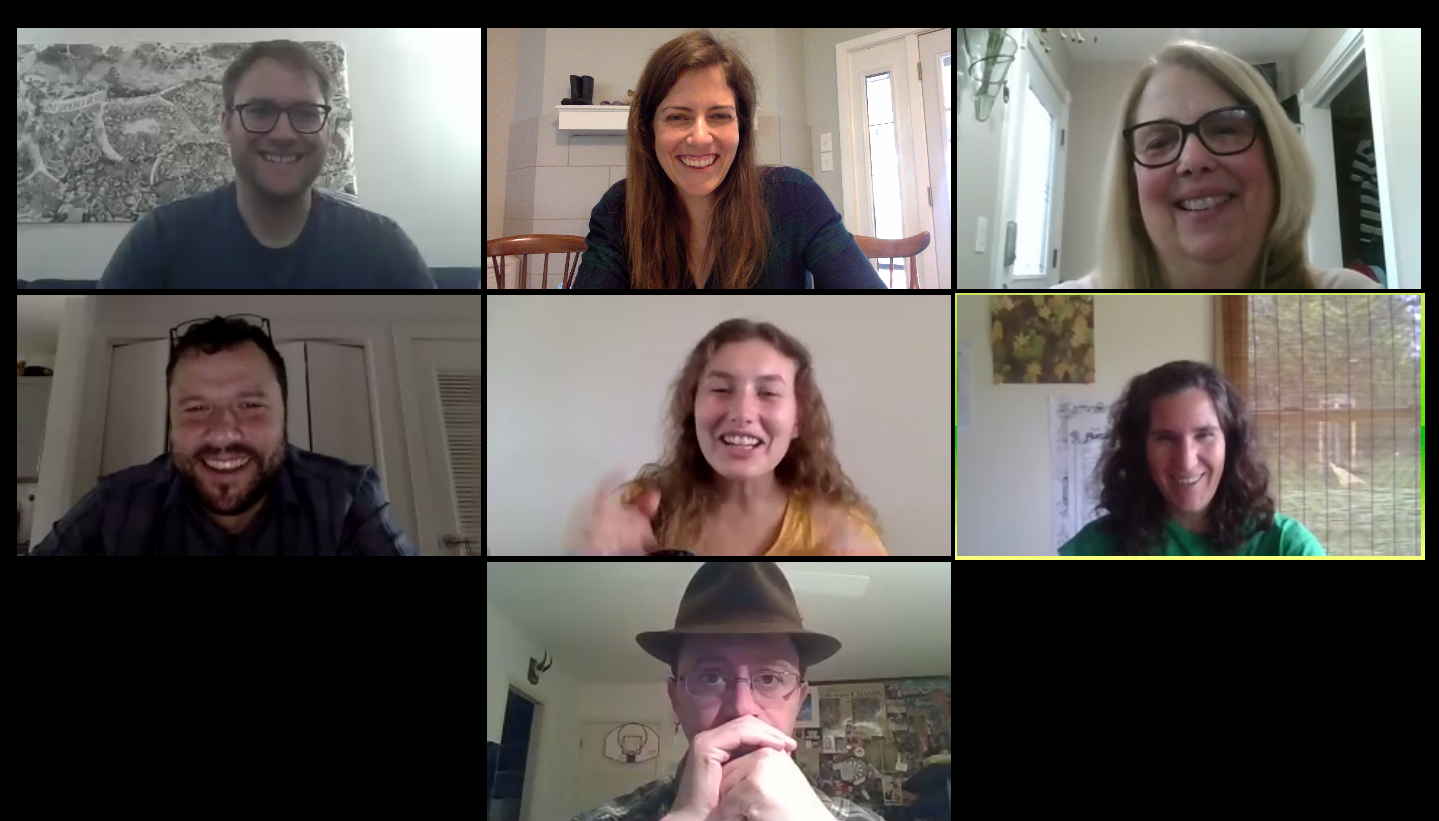Community Resilience
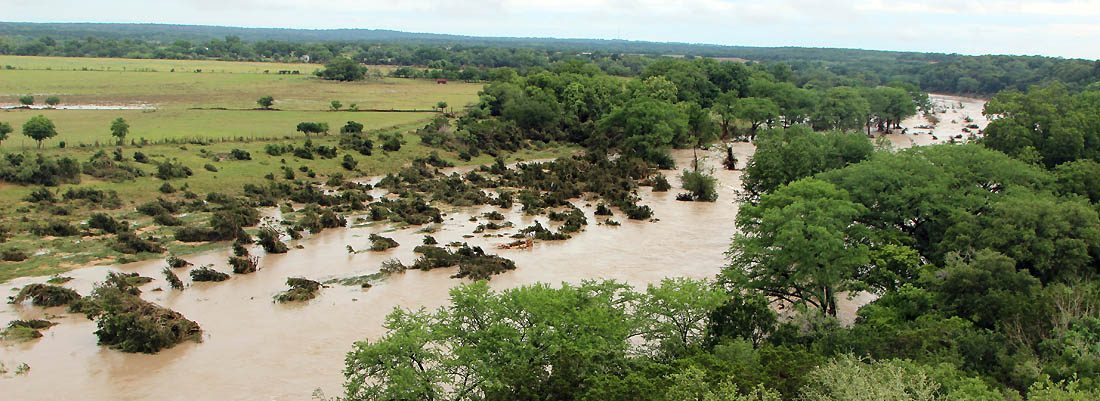
Community Resilience News and Resources
The Hill Country Alliance has spent the past 17 years bringing together residents from across the 17 counties of the Texas Hill Country. As we move forward and adapt to new forms of community connection, we are working to keep you informed on relevant Hill Country news and regional resources.
These are non-exhaustive lists of resources found throughout the Hill Country that will continue to be updated. If we missed a relevant resource in your part of the Hill Country, or if you have suggestions on additional Hill Country community resources we should cover, please contact leah@hillcountryalliance.org.
Be Wildfire Ready
It’s a hot one! With drought comes a heightened risk for wildfire across the Hill Country. Click here to view the Texas A&M Forest Service Incident Viewer – an interactive map that shows wildfires across the state in real time. While wildfires are unpredictable, there are steps you can take to prepare your home, neighborhood, and family.
Farmer's Markets and Local Producers
One great way to support and invest in community resilience is through food choice. You can help local businesses bounce back by buying from Hill Country farmers. Click here to find out more about the resources available in your region.
Hill Country Food Banks
During this time, food banks across Texas are seeing more faces than ever before. Whether you are in a place of need or a place of plenty, don’t forget your local food bank. Click here to find out more about Hill Country food banks in your area.
News Resources
Our local newspapers work overtime to make sure we have all the coverage we need (and more). Whether it’s through online news or physical papers, these news sources help keep us informed and are critical small businesses throughout the Hill Country. Click here to find out what Hill Country news source is closest to you.
Additional Guidebooks & Disaster Recovery Guidance – Texas A&M AgriLife Extension
Texas Extension Disaster Education Network (EDEN) is a collaborative educational network dedicated to educating citizens about disaster mitigation, preparedness, response and recovery. Texas EDEN is a part of the Texas AgriLife Extension Service and is affiliated with National Extension Disaster Education Network.
In the event of a disaster, computer access may be limited. We recommend having some of the below documents already downloaded, printed, and stored in a secure location for immediate access and use.
OVERVIEW: After a Disaster – How to Recover
 After a Disaster – How to Recover
After a Disaster – How to Recover
This disaster recovery guide provides simple information on how individuals, families and businesses can recover from a disaster such as a wildfire, hurricane, severe weather and more. Created by Texas A&M AgriLife Extension Service, The Texas A&M System.
Click here to view and download the PDF (en Español)
Click here to view and download the eBook (en Español)
You can also explore and download individual sections of the guide here.
Texans, Get Ready! Be Prepared to Survive and Recover from a Disaster
Texans, Get Ready! Be Prepared to Survive and Recover from a Disaster
Use this disaster preparedness guide to protect yourself and your household during and immediately after a catastrophe by making a disaster plan and a disaster kit. Plan to take care of yourself without outside help for at least 3 days. Special considerations include keeping food safe to eat, sheltering-in-place, and discussing a disaster with children. Created byTexas A&M AgriLife Extension Service, The Texas A&M System.
Click here to view and download the PDF (en Español) – 2410 words
Prepare Your Grab-and-Go Kit
 Prepare Your Grab-and-Go Kit
Prepare Your Grab-and-Go Kit
Make a grab-and-go kit so basic items can be accessed easily before a disaster strikes. You can use a backpack or suitcase to carry your kit. Gather the following items on the list to form your kit. Created by Texas A&M AgriLife Extension Service, The Texas A&M System.
Click here to view and download the eBook – 600 words
Maintain Your Health During a Disaster
 Maintain Your Health During a Disaster
Maintain Your Health During a Disaster
Emergency situations and disasters can take a toll on your health. Prepare for your health needs in advance by following these easy tips. Created by Texas A&M AgriLife Extension Service, The Texas A&M System.
Click here to view and download the eBook – 690 words
Water Damage Restoration and Clean Up Checklist
 Water Damage Restoration and Clean Up Checklist
Water Damage Restoration and Clean Up Checklist
After the flood waters recede and the cleanup has been done, most folks want to get back into their homes or businesses and start rebuilding. The problem is that wood that has been submerged in water has likely absorbed a large amount of water. Rebuilding too quickly after a flood can cause continuing problems such as mold growth, insect infestations, and deterioration of the wood and wall coverings. Flood waters are not clean water; therefore, most porous building materials must be removed and replaced with new materials. Use this eBook as a guide during your water damage restoration and clean up process. Created by Texas A&M AgriLife Extension Service, The Texas A&M System.
Click here to view and download the eBook – 1950 words
Return to Normal After a Disaster
 Return to Normal After a Disaster
Return to Normal After a Disaster
Returning to normal after a disaster may pose problems for you and your family. Keep your health a priority. Created by The Texas A&M AgriLife Extension Service, The Texas A&M System.
Click here to view and download the eBook – 620 words
Additional Resources:
Additional Resources:
Please see the following resources lists – featuring dozens of downloadable PDFs in both English and Spanish – for additional guidance and support in recovering from a natural disaster:
- Additional Disaster Recovery Guides – State and federal guidance for financial security, storm debris, and much more.
- Food and Water Safety – Guidance for residents’ health post-disaster, from cooking without power to water well testing.
- Health & Safety Resources for Disaster Recovery – Resources for children and adults, covering hygiene as well as physical and mental health.
- Disaster Recovery Resources for Animals – Guidance on prioritizing animal care during and after a disaster, with a particular focus on livestock.
- Disaster Recovery Resources for Financial Recovery & Risk Management – Guidance for residents’ financial security post-disaster, from replacing personal documents to receiving disaster assistance funding.
- Restoring Your Home & Belongings After a Disaster – Guidance for residents’ household restoration, from the first day back through the rebuilding process.
- Tree Removal & Recovery – Guidance for residents’ tree care and maintenance – both post-disaster and preventative.
You access all these resources and many more on the Texas Extension Disaster Education Network (EDEN) website.
Give Life – Donate Blood!
When disaster hits a community, there is often a higher demand for local blood donations. If able, donating blood is a way you can help ensure community health and wellness. View Hill Country blood donation locations below:
Mental Health Resources in the Texas Hill Country
Often, when disasters affect our communities immediate challenges are easier to define, address, and repair while mental health challenges can be neglected. However, the long-term effects of neglected mental and behavioral health can be just as devastating to our communities and families. The resources below can connect you with support systems across the Hill Country region.
Mental health is not solely an individual responsibility, but is also a product of community conditions. The places where people live, learn, work, play, and pray can have a significant impact on improving mental health. – Hogg Foundation for Mental Health (November 2018)
Hill Country Mental Health Centers & Services
Hill Country Mental Health Centers & Services
If it is your first time seeking out mental health resources or it has been a while, check out NAMI’s guide Finding a Mental Health Professional and the Hogg Foundation’s A Guide to Understanding Mental Health Systems and Services in Texas
- Hill Country Mental Health & Developmental Disabilities Center – Multiple locations across the Hill Country, Mental Health Centers
- The Center for Health Care Services – Bexar County, Mental Health Center
- Bexar County Telehealth Resources List – Bexar County
- San Antonio Community Resource Directory – Bexar County
- Integral Care – Travis County, Mental Health Center
- The Austin Center for Grief & Loss – Travis County
- DBSA Heart of Texas – Online support group for Texan’s dealing with mood disorders
- Pregnancy & Postpartum Health Alliance of Texas – Travis County & online guidance for pregnancy and postpartum struggles.
- Survivors of Suicide Austin – Travis County & online support group for people who have lost loved ones to suicide.
You can also find your local LMHA and LBHA’s on the Texas Health and Human Services site here and you can search for individual therapists and groups on the Psychology Today search engine.
National Alliance on Mental Illness (NAMI): Texas
National Alliance on Mental Illness (NAMI): Texas
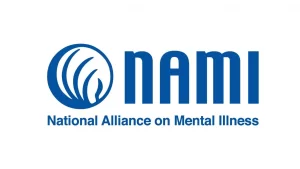 NAMI provides advocacy, education, support and public awareness so that all individuals and families affected by mental illness can build better lives.
NAMI provides advocacy, education, support and public awareness so that all individuals and families affected by mental illness can build better lives.
- NAMI Central Texas – Serves Austin and Central Texas
- NAMI San Antonio – Serves San Antonio
- NAMI Kerrville – Serves Kerr, Bandera, Edwards, Gillespie, Kendall, Kimble, & Real counties.
- NAMI Texas Online Programming (Virtual support groups, webinars, and education courses)
Low Cost & Sliding Scale
Low Cost & Sliding Scale
- Capital Area Counseling – Austin
- River City Advocacy – New Braunfels
- YWCA Counseling and Referral Center – Austin
- Samaratin Center – Central Texas/Austin
- Catholic Charities Central Texas – Central Texas
- Austin Child Guidance Center – Austin
This list is not exhaustive and you can search for individual therapists and groups that offer low cost and sliding scale options in your area on the Psychology Today search engine.
Farm and Ranch Families: Impact of Mental Health
Farm and Ranch Families: Impact of Mental Health
Farm families face unique stressors, including financial challenges and family-farming relationships that blur the line between their business and personal lives. These stressors can affect the entire family and may lead to physical illness, depression, substance abuse, and suicide. According to the Centers for Disease Control and Prevention (CDC), farmers and ranchers are more than five times as likely to commit suicide as the general population and are more likely to report substance abuse.
- Rural Response to Farmer Mental Health and Suicide Prevention – Rural Health Info Hub
- Personal Nature of Agriculture – University of Wyoming
- Farmer Stress & Resources – American Psychological Association
- Farm State of Mind: Stronger Together – Farm Bureau
- Farm Stress and Mental/Behavioral Health Resources – AgrAbility
- Farm Crisis Center
- Farmer Resource Network – Farm Aid
Behavioral Health: Substance Abuse & Addiction Resources
Behavioral Health: Substance Abuse & Addiction Resources
- Substance Abuse and Mental Health Services Administration – U.S. Department of Health & Human Services
- Communities for Recovery – Austin-based, online/remote options
- Drug & Alcohol Addiction Rehab, Treatment & Recovery Resources In Texas – database & search tool
- Laurel Ridge Treatment Center – San Antonio
- Database of Alcoholics Anonymous and 12-step programs
Urgent Services
Urgent Services
For mental health or substance use emergencies where your safety or the safety of others is at immediate risk, dial 9-1-1.
If you feel you are experiencing a mental health or substance use emergency but your safety or the safety of others is not at immediate risk, please contact:
- National Suicide Prevention Lifeline: Dial 800-273-8255 (800-273-TALK)
- Veterans Crisis Line: Dial 800-273-8255, option 1
- Integral Care/Mobile Crisis Outreach Team (MCOT): 512-472-4357, Option 1 for English then Option 1 again
- 24/7 Hill Country MHDD Crisis Hotline: 1-877-466-0660
- 24/7 Crisis Text Line: Text TX to 741741
- Texas 2-1-1: Dial 2-1-1, option 8
- 24/7 Local Mental Health Authority Crisis Hotline for substance use and other crisis services
- National Domestic Violence Hotline: 1-800-799-7233
Click the “Escape/ESC” button on your keyboard twice at any time if you need to leave the website immediately
Internet usage can be monitored and is impossible to erase completely. If you’re concerned your internet usage might be monitored, call the hotline instead and make sure to clear your browser history after visiting the website. - LGBTQ Youth Hotline (The Trevor Project): 1-866-488-7386
Click the “Escape/ESC” button on your keyboard three times if you need to leave the website immediately
Internet usage can be monitored and is impossible to erase completely. If you’re concerned your internet usage might be monitored, call the hotline instead and make sure to clear your browser history after visiting the website.
Uvalde - Robb Elementary School Shooting
The tragedy that unfolded at Robb Elementary School in 2022 continues to weigh heavily on hearts across Uvalde County and the Hill Country as a whole. Please see below resources for ways you can support those who lost loved ones and our partners in the region. If you have additions, please contact leah@hillcountryalliance.org.
Additional Resources:
HCA Coronavirus Commentary and Resources
Hill Country Alliance staff has been adapting to the new reality of working remotely. We’re hosting weekly video staff calls via Zoom, moving in-person events and workshops to the fall, and doing our best to support our incredible partners around this region.
We are also taking this time to look forward – how can we better fulfill our mission of bringing together an ever-expanding alliance of groups throughout Central Texas for the long-term objective of preserving open spaces, water supply, water quality and the region’s unique character?
If you have a resource or information you’d like to share with the community relating to coronavirus response, local economic resilience, or something similar, please contact leah@hillcountryalliance.org.
Recent Community Resilience News and Resources
Katharine Hayhoe’s post-election advice: Fight fear, embrace hope and work together
To get a sense of what’s to come and what’s needed to ensure domestic climate action continues, I spoke with Katharine Hayhoe, an atmospheric scientist and author who teaches at Texas Tech University and is chief scientist for The Nature Conservancy. She is one the...
Hackers target the Muleshoe, Texas water system – not for ransom, but as a test
According to cybersecurity experts, Texas is in the crosshairs of attempts by hackers trying to attack critical infrastructure. And it’s happening in unexpected places, like the tiny town of Muleshoe, Texas, where the water system overflowed in January after a hacker...
Eclipse roundtables ‘like preparing for a hurricane’ in the Hill Country
DRIPPING SPRINGS, Texas (KXAN) — The Hill Country Alliance, a non-profit focused on conserving and protecting the Texas Hill Country, will host the latest of its Hill Country Eclipse Roundtables on July 25th. The total solar eclipse, happening on April 8th, 2024, is...
How the ongoing drought impacts the Hill Country
In 2022, San Antonio received only a third of its average annual rainfall. Kerrville received 12.38 inches, 60% below its normal average. Popular swimming holes from Jacobs Well in Wimberley to the Guadalupe River near Center Point dried up. The Pedernales, Llano...




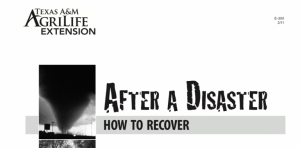 After a Disaster – How to Recover
After a Disaster – How to Recover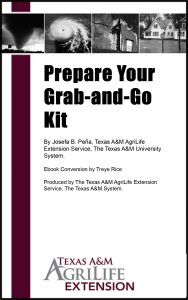 Prepare Your Grab-and-Go Kit
Prepare Your Grab-and-Go Kit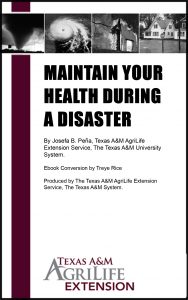 Maintain Your Health During a Disaster
Maintain Your Health During a Disaster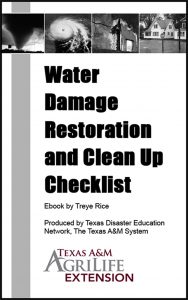 Water Damage Restoration and Clean Up Checklist
Water Damage Restoration and Clean Up Checklist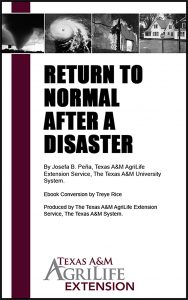 Return to Normal After a Disaster
Return to Normal After a Disaster
